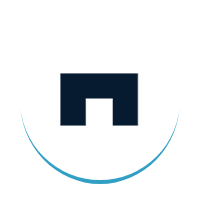How Remote Teams Ensure Quality in Custom Software Projects
Remote quality assurance (QA) processes in custom software projects have emerged as a vital enabler for building and delivering reliable, secure, and scalable custom software. With distributed development models becoming the new normal, ensuring seamless quality practices across geographies is no longer a challenge, it is a strategic advantage.
Companies across industries now recognize that embedding QA in custom software development is the key to improving speed, resilience, and customer satisfaction.
So, let’s explore the growing importance of remote QA processes, modern practices reshaping quality engineering, the role of business intelligence (BI) in driving insights, compliance factors, and the evolving future of quality assurance models.
Why Remote QA Matters in Custom Software

For businesses building custom software, quality is non-negotiable. A modern custom software development company must ensure that products not only function smoothly but also align with unique business needs, security requirements, and compliance standards. In globally distributed development, remote QA plays a crucial role by ensuring consistency and transparency.
Organizations face challenges such as varying time zones, diverse infrastructure, and dispersed teams. Without a solid QA framework, these complexities could easily lead to delays, missed bugs, or compliance risks. Remote QA, however, brings structure and collaboration by integrating testing as a continuous function rather than a final step.
By adopting remote-first strategies, companies unlock:
- Continuous validation of product functionality across environments.
- Faster feedback loops with developers, reducing defect leakage.
- Cost efficiencies by leveraging global QA talent.
- Improved product reliability for end-users.
This ability to maintain software quality while scaling development speed makes remote QA indispensable in today’s business landscape.
Building Robust Remote QA Processes
A strong QA framework is the backbone of successful custom software development projects. Nowadays, the approach to remote QA has evolved from reactive, manual testing into proactive, AI-enabled engineering. Teams are now blending Shift-Left and Shift-Right practices – testing earlier in the development lifecycle and extending validation into production monitoring.
AI-driven test automation platforms are gaining traction. With self-healing test suites, systems automatically adapt when application elements change, eliminating maintenance bottlenecks. Test generation powered by machine learning (ML) allows teams to simulate edge cases and user behaviors at scale.
Still, human-led testing retains importance. While automation ensures scalability, manual testing validates usability, accessibility, and user experience – factors that algorithms alone cannot judge. The most resilient QA models combine automation and manual expertise for comprehensive coverage.
Ultimately, building robust remote QA processes requires:
- Early collaboration: QA engineers integrated into design and sprint planning.
- Cloud-based tools: Unified platforms to execute tests across devices and environments.
- Automated pipelines: Integration with CI/CD systems to enable continuous testing.
- Clear documentation: Test cases and results accessible across teams for full transparency.
By weaving QA into every stage of the software lifecycle, businesses reduce risks and accelerate delivery timelines.
Tools and Collaboration in Remote QA
Distributed teams require more than talent, they need the right tools to collaborate efficiently. Modern remote QA is heavily supported by cloud-based and real-time platforms.
For cross-device testing, tools like BrowserStack, Sauce Labs, and LambdaTest allow testers to simulate diverse environments instantly. Jira, Azure DevOps, and TestRail ensure defect tracking and test management remain transparent across geographies. Collaboration hubs like Slack and Microsoft Teams bridge communication gaps.
Equally critical is integration with CI/CD pipelines. QA cannot operate in silos; continuous integration ensures that every new build is automatically tested, with results feeding back to developers in real time. This accelerates bug detection and reduces costly late-stage fixes.
The strength of remote QA lies in its ability to transform collaboration into a measurable driver of efficiency.
Leveraging Business Intelligence for QA Insights

Business intelligence (BI) has shifted from being a retrospective tool to a proactive driver of quality in QA. By combining data science with testing, BI enables teams to go beyond defect reporting and uncover actionable insights.
Modern BI-driven QA frameworks now integrate:
- Embedded analytics within QA dashboards for real-time visibility.
- Augmented analytics powered by AI to detect anomalies and highlight test coverage gaps.
- Self-service BI tools that allow stakeholders to explore quality metrics without technical expertise.
Strong data governance ensures the integrity of test results, while real-time dashboards give leadership an instant view of release readiness. By embracing BI, businesses transform QA from a back-office function into a strategic enabler of decision-making.
With BI in QA, companies can predict risks, forecast release bottlenecks, and align testing priorities with business outcomes. This insight-driven model ensures software meets not only technical specifications but also customer expectations.
Security and Compliance in Remote QA
In industries like finance, healthcare, and government, QA extends beyond functionality; it must validate regulatory compliance. Failure to meet standards such as GDPR, HIPAA, or SOC2 can lead to financial penalties and reputational damage.
Remote QA frameworks have adapted by embedding compliance checks directly into testing pipelines. Tools now validate encryption standards, data handling policies, and access protocols during routine testing.
With distributed teams handling sensitive information, zero-trust security models and secure VPNs have become standard. Collaboration platforms also offer encryption and access control, reducing the risk of data leaks.
By combining regulatory testing with automation, organizations achieve compliance without sacrificing speed, ensuring products are both secure and market-ready.
Evolving Remote QA Models

The future of remote QA lies in predictive, AI development-based approaches. Traditional defect detection is giving way to predictive quality models that anticipate risks before they manifest.
Key trends shaping the evolution of QA include:
- AI-powered defect triage: Automating issue prioritization based on severity and impact.
- Self-healing pipelines: Automatically fixing or rerunning failed test cases.
- QAOps philosophy: Embedding QA directly into DevOps pipelines for continuous quality.
- Predictive risk modeling: Using machine learning to forecast which modules are most likely to fail.
Only 11% of QA teams have reached optimized maturity, where advanced automation, AI adoption, and predictive models are fully integrated. This highlights the massive opportunity for organizations to transform QA into a strategic differentiator.
In the coming years, QA teams that leverage predictive and proactive practices will set the standard for how custom software is developed and delivered globally.
Enhance your software quality game by taking a free QA maturity assessment today.
Challenges of Remote QA
Despite its benefits, remote QA poses challenges that businesses must address. Common issues include communication breakdowns, time zone differences, and cultural barriers in globally distributed teams. Inconsistent infrastructure can also limit test execution.
However, these obstacles can be mitigated by:
- Standardizing communication through unified platforms.
- Scheduling overlapping work hours for real-time collaboration.
- Using cloud-based infrastructure to ensure uniform environments.
- Encouraging cross-functional training for cultural and technical alignment.
Organizations that address these hurdles gain not just resilient QA processes but also stronger, more cohesive development teams.
Conclusion
Remote quality assurance in custom software development has transitioned from being a necessity to a strategic differentiator. By integrating Shift-Left practices, leveraging AI-powered test automation, embedding business intelligence for predictive insights, and maintaining strong compliance frameworks, organizations achieve resilience and agility.
The journey toward fully optimized QA is ongoing. With only a fraction of teams currently leveraging predictive models, the next few years will be decisive. Those who embrace QAOps, predictive analytics, and proactive strategies will not only deliver better software but also secure a lasting competitive edge.
In a market where quality is no longer optional, remote QA ensures that businesses stay future-ready, customer-focused, and compliant – while delivering reliable, high-performing custom software.
FAQs
Why is remote QA important in custom software projects?
Remote QA ensures consistent quality across distributed teams. It helps detect defects early, accelerates delivery, reduces costs, and provides reliable, scalable solutions tailored to business needs.
How do remote QA processes differ from traditional QA?
Traditional QA relies on co-located teams, while remote QA processes use cloud-based tools, automation, and real-time collaboration platforms. This enables testing across geographies without sacrificing efficiency.
What role does automation play in remote QA?
Automation is central to modern software testing services. Automated test suites integrated into CI/CD pipelines provide faster feedback, reduce manual errors, and ensure continuous validation throughout development.
How does business intelligence improve remote QA outcomes?
Business intelligence services deliver real-time dashboards and analytics, helping teams track quality metrics, predict risks, and make data-driven decisions that align QA with business goals.
What challenges can businesses face with remote QA, and how are they addressed?
Common challenges include time zone differences, communication gaps, and infrastructure inconsistencies. These can be overcome with clear documentation, cloud-based environments, flexible scheduling, and cultural alignment practices.


